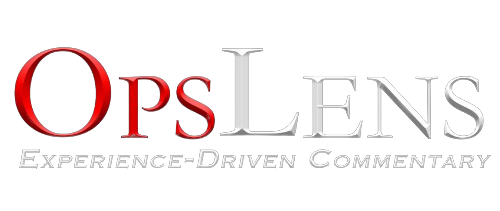Since its release in the summer of 2023, critics and fans have not stopped talking about Christopher Nolan’s Oppenheimer. But the more I watch and read people’s views on the film, the more I suspect that a large number of us completely missed the artistic thrust of the project.
Oppenheimer, based on the Pulitzer-winning book American Prometheus: The Triumph and Tragedy of J. Robert Oppenheimer, by Kai Bird and Martin Sherwin, chronicles the career of J. Robert Oppenheimer—the man credited with the creation of the atomic bombs that were ultimately dropped on Hiroshima and Nagasaki in 1945. The drama centers on the inner turmoil and intellectual struggle Oppenheimer went through while creating the weapon.
Given that the subject of the film is one man’s personal experience, it’s astounding that some rushed to the theater, hoping to see an action-packed war movie. The onslaught of complaints about Nolan’s film suggested that there was too much talking and not enough action to warrant sitting in front of a screen for three hours. And there were others who claimed that Nolan didn’t portray the absolute annihilation wreaked on Japan after the bomb was dropped.
Nolan addressed why he decided to leave footage of Hiroshima and Nagasaki out of the film, saying: “We know so much more than [Oppenheimer] did at the time. He learned about the bombings of Hiroshima and Nagasaki on the radio, the same as the rest of the world.”
Nolan’s job was not to tell us the actual history of Oppenheimer’s struggle to create the nuclear bomb. Generally, a filmmaker’s job is to give the audience a compelling story that makes us think or feel in a way we haven’t before. Filmmakers are not historians. And Nolan had the wherewithal to address this commonly held view, saying: “[Oppenheimer is] not a documentary. It is an interpretation. That is my job. I think it’s narrative dramatic filmmaking.”
It can be easy to fall into the “presentist” trap. Presentism is the act of applying modern values and concepts onto historical events. Some people use this presentist view to claim Oppenheimer was an evil man for creating the atomic bomb that the United States government ultimately used on its wartime enemy. But, as Nolan said, Oppenheimer learned about the use of the atomic bomb like the rest of us: on the radio.
It’s also worth noting that Nolan’s portrayal of Oppenheimer does a great job of revealing what the theoretical physicist was up against. Oppenheimer did not just wake up one morning hoping to create the most dangerous weapon ever made. He was in a race against Nazi physicists, specifically Werner Heisenberg, who were trying to create their own nuclear weapon. Oppenheimer had a choice: stand down and allow the Nazis to construct a nuclear weapon, which they almost certainly would have used on the United States, or beat them to it.
Oppenheimer’s unique predicament was a painful one, and one that most of us will likely never have to face. That is what Nolan was trying to portray in Oppenheimer—and how it was effectively a lose-lose situation. Either hundreds of thousands of Americans were going to die, or hundreds of thousands of Germans or Japanese were going to die during the war.
Italian physicist Carlo Riveli said the following about the film:
I just saw the movie and I’m still under the spell. I think everybody should see this movie not only because it’s fantastic, but because the kind of questions that it raises are not just about the ’40s and general issues about morality of science. These are burning questions today. The doomsday clock that is supposed to estimate the risk of nuclear catastrophe has never been closer to midnight. We are in a situation where the kind of concerns that Oppenheimer was expressing — in his confused way — are our concerns today. I think this is what the movie brings out so strongly.
Everyone should watch Oppenheimer with the understanding that it is a narrative retelling of the life of a complicated physicist who was faced with an impossible decision. It is not a history; it is a film. And while we may never have to make as difficult or as world-changing a decision as did Oppenheimer, Nolan shows us the scientist as a human being, thus allowing us to relate to and empathize with him.
—
Image credits: Public domain (Oppenheimer); public domain (Trinity test)
